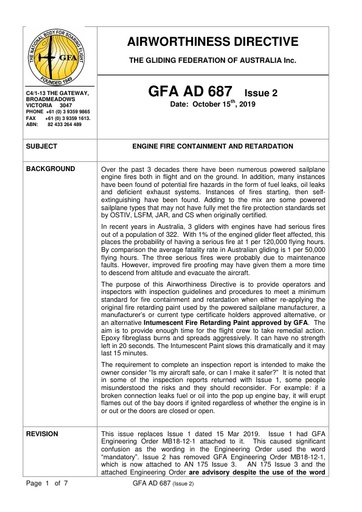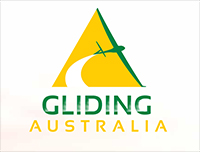pdf GFA AD 687 Issue 2 Popular
By CTO 3087 downloads
GFA AD 687 Issue 2.pdf

ENGINE FIRE CONTAINMENT AND RETARDATION
Over the past 3 decades there have been numerous powered sailplane engine fires both in flight and on the ground. In addition, many instances have been found of potential fire hazards in the form of fuel leaks, oil leaks and deficient exhaust systems. Instances of fires starting, then self-extinguishing have been found. Adding to the mix are some powered sailplane types that may not have fully met the fire protection standards set by OSTIV, LSFM, JAR, and CS when originally certified. In recent years in Australia, 3 gliders with engines have had serious fires out of a population of 322. With 1% of the engined glider fleet affected, this places the probability of having a serious fire at 1 per 120,000 flying hours. By comparison the average fatality rate in Australian gliding is 1 per 50,000 flying hours. The three serious fires were probably due to maintenance faults. However, improved fire proofing may have given them a more time to descend from altitude and evacuate the aircraft. The purpose of this Airworthiness Directive is to provide operators and inspectors with inspection guidelines and procedures to meet a minimum standard for fire containment and retardation when either re-applying the original fire retarding paint used by the powered sailplane manufacturer, a manufacturer’s or current type certificate holders approved alternative, or an alternative Intumescent Fire Retarding Paint approved by GFA. The aim is to provide enough time for the flight crew to take remedial action. Epoxy fibreglass burns and spreads aggressively. It can have no strength left in 20 seconds. The Intumescent Paint slows this dramatically and it may last 15 minutes. The requirement to complete an inspection report is intended to make the owner consider “Is my aircraft safe, or can I make it safer?” It is noted that in some of the inspection reports returned with Issue 1, some people misunderstood the risks and they should reconsider. For example: if a broken connection leaks fuel or oil into the pop up engine bay, it will erupt flames out of the bay doors if ignited regardless of whether the engine is in or out or the doors are closed or open. This issue replaces Issue 1 dated 15 Mar 2019. Issue 1 had GFA Engineering Order MB18-12-1 attached to it. This caused significant confusion as the wording in the Engineering Order used the word “mandatory”. Issue 2 has removed GFA Engineering Order MB18-12-1, which is now attached to AN 175 Issue 3. AN 175 Issue 3 and the attached Engineering Order are advisory despite the use of the word.

